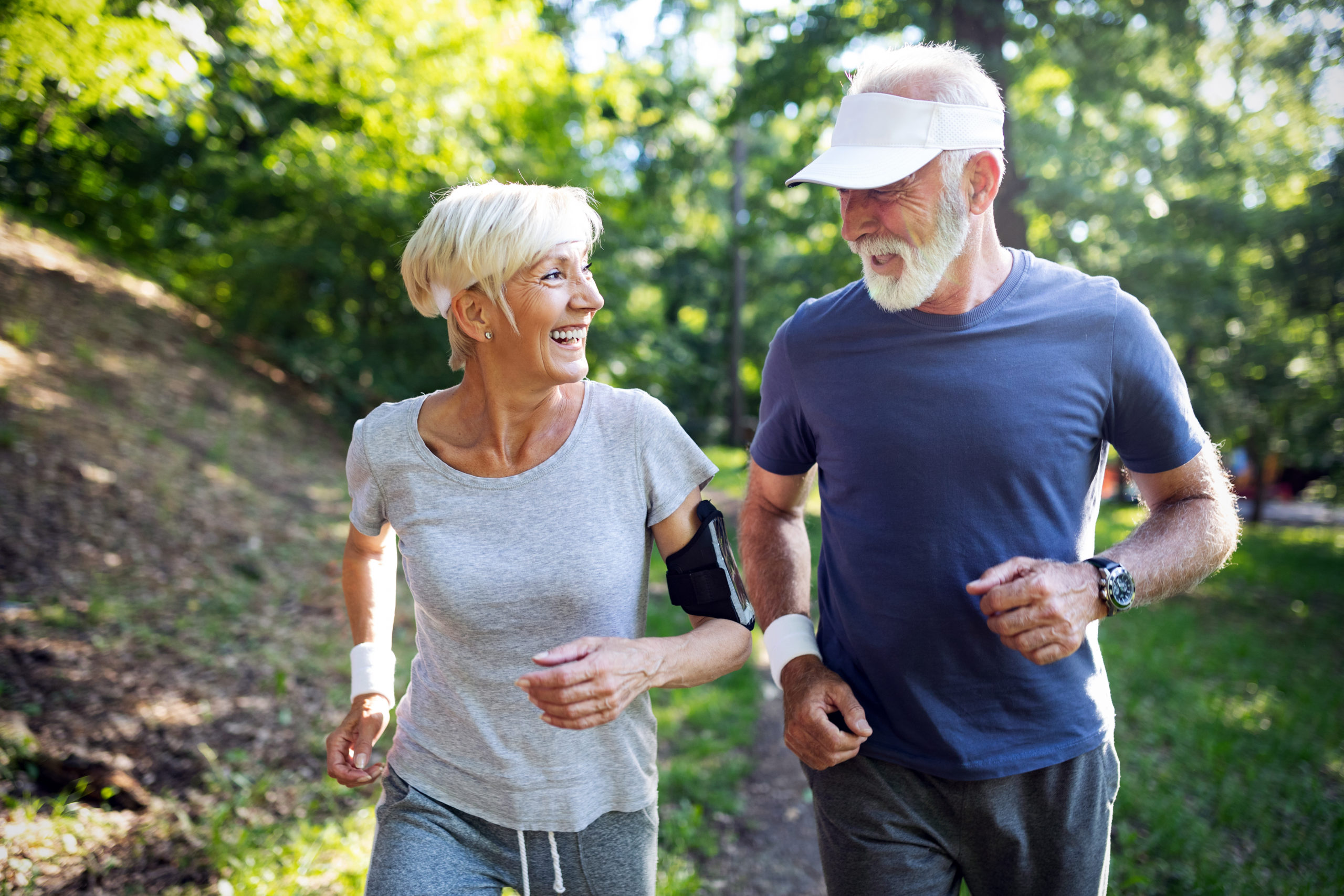
Fitness and health become increasingly important as we age. Once the average person reaches middle age, the metabolism slows and it is harder to hang onto muscle and bone mass. Older people are more at risk of falls and fractures as well as lifestyle-related diseases like diabetes, some cancers, and heart problems.
Improving Health in Over 50s
Diet and exercise are key to good health at any stage of life. However, because it becomes harder to lose fat and maintain or build muscle as we get older, a middle aged person will likely have to pay more attention to what they eat and how they exercise than someone in their twenties.
Nutritional Needs for Over 50s
For over 50s to maintain a good balance of vitamins and minerals in the body and support bone and muscle health, Australian Dietary Guidelines12recommend the following serving sizes per day:
| Vegetables | Fruit | Wholegrains | Lean Protein | Dairy | |
| Women | 5 | 2 | 4 | 2 | 4 |
| Men | 5.5 | 2 | 6 | 2.5 | 2.5 |
| Eat small amounts of ‘good’ fats (unsaturated, e.g. from nuts or seeds). Drink mostly water. Limit processed foods, foods with added salt, and alcohol. |
For best health at any age, the simplest way is to eat a varied, mostly unprocessed diet consisting mainly of plants and wholegrains, with some meat, fish and dairy. That said, not everyone likes fish or is comfortable in the kitchen. As part of your overall health, diet should be something discussed regularly with your GP. They can give you a referral to an accredited dietician if either of you have concerns about getting the right amount of nutrition given your preferences and body’s needs. Choose a dietician over a nutritionist, as a dietician must have accreditation3 in the field of nutrition and is subject to national competency standards.
Exercise for Over 50s
Weight bearing exercises support good bone density, which is essential for resistance to breaks and fractures. We all lose bone density as we age4, but women are particularly vulnerable to loss of bone density as it is affected by estrogen levels5. Maintaining lean muscle mass is also essential to maintain mobility and strength. It doesn’t have to be exhausting, but regular movement, aerobic exercise, and particularly strength training, will help maintain muscle and mobility into old age678.
Monitoring Your Health
Keeping track of changes in your body is important for health regardless of age. Regularly assess the balance of fat and muscle in your body. A body composition scan will read these accurately as well as giving information on bone density and hydration levels. This information can serve as an indicator of serious long-term health risks and can be shown to medical or fitness professionals to aid discussions about your health and physical abilities.
An Opportunity for Fitness Professionals
The habit of the gym industry focusing on aesthetics and young people is troubling. Young people are not the only ones who want to look good, nor are they the only group concerned with fitness and overall health. Arguably, older people will benefit more from regular, long term strength training and paying attention to diet than young people.
BodyExo suggests that the gym industry takes care not to focus on short term, high impact aesthetics and instead focus on long term health management. Given the current rates of lifestyle related diseases in Australia and the increasing number of Australians entering middle age9, BodyExo CEO Adrian Rainey believes that fitness professionals who work with Australians over 50 can support public health by encouraging older Australians to maintain a healthy amount of lean muscle mass.
“We know that increasing skeletal muscle mass and increasing bone density contributes towards better resistance to injuries from falls. If more older Australians are encouraged to commit to long term exercise, it is possible we could reduce healthcare costs, decrease the risk of lifestyle related diseased, and even increase the life expectancy of the average Australian,” he said.
__________________________________________________________________________________
[1] https://nutritionaustralia.org/fact-sheets/australian-dietary-guidelines-recommended-daily-intakes/
[3] https://www.healthdirect.gov.au/dietitians
[5] https://www.ncbi.nlm.nih.gov/pmc/articles/PMC3383520/
[6] https://www.ncbi.nlm.nih.gov/pmc/articles/PMC3117172/
[7] http://perspectivesinmedicine.cshlp.org/content/8/3/a029785.short
[8] https://www.sciencedirect.com/science/article/pii/S2468867319300720